The Cuban Missile Crisis of 1962 was one of the most critical moments of the Cold War, bringing the world to the brink of nuclear conflict. This 13-day confrontation between the United States and the Soviet Union over Soviet ballistic missiles in Cuba is often considered the closest the world has come to nuclear war. This article will explore the crisis in depth, examining its causes, key events, and long-term consequences.
Read Also : The Battle of Saratoga (1777): Turning the Tide of the American Revolution
Introduction to the Cuban Missile Crisis
The Cuban Missile Crisis was a turning point in the Cold War, showcasing the dangerous brinkmanship between the United States and the Soviet Union. It all began when American reconnaissance planes discovered Soviet missiles in Cuba, leading to a tense standoff that could have resulted in nuclear disaster. Understanding the background and events leading up to this crisis is essential to grasp its significance.
What Led to the Cuban Missile Crisis?
The roots of the Cuban Missile Crisis can be traced back to several factors, including the intensifying Cold War rivalry and the failed Bay of Pigs invasion in 1961. The U.S. attempted to overthrow Fidel Castro’s government, which pushed Cuba closer to the Soviet Union for protection. The Soviets, seeing an opportunity to strengthen their position, decided to deploy nuclear missiles in Cuba.
Additionally, the U.S. had stationed missiles in Turkey, close to the Soviet border, which Khrushchev viewed as a direct threat. The deployment of missiles in Cuba was partly a response to this perceived aggression and an attempt to level the playing field.
The fear of nuclear war was already high during this period, and the discovery of Soviet missiles in Cuba only exacerbated tensions. Both superpowers were locked in a game of nuclear brinkmanship, where any wrong move could have catastrophic consequences.
How the Cold War Set the Stage for the Crisis
The Cold War was marked by intense rivalry between the U.S. and the USSR, with both nations vying for global dominance. The spread of communism, particularly in Latin America, was seen as a direct challenge to U.S. influence in the Western Hemisphere. Cuba, under Fidel Castro, became a focal point of this struggle, especially after aligning itself with the Soviet Union.
The Cuban Missile Crisis was a direct result of the Cold War’s zero-sum game mentality. The U.S. and the Soviet Union both believed that any gain by the other side was a loss for themselves. This led to an arms race and the placement of nuclear weapons in strategic locations around the world, including Cuba.
The Cold War’s influence on the crisis is also evident in the way both superpowers approached the situation. Both were keenly aware of the global implications of their actions, and the need to avoid appearing weak. This led to a highly calculated, yet dangerous, approach to diplomacy and military strategy.
The Strategic Importance of Cuba to the Soviet Union
Cuba’s strategic location made it an ideal site for Soviet missiles. Positioned just 90 miles off the coast of Florida, it provided the USSR with a direct threat to the U.S. mainland. The presence of nuclear missiles in Cuba would allow the Soviets to strike the U.S. with little warning, significantly shifting the balance of power.
For the Soviet Union, placing missiles in Cuba was also a way to protect its ally from U.S. aggression. After the Bay of Pigs invasion, Castro sought greater military support from the USSR to deter future attacks. The deployment of missiles was seen as a way to secure Cuba’s independence and solidify its position within the communist bloc.
The strategic importance of Cuba cannot be understated. It represented a significant threat to U.S. national security and was a bold move by the Soviet Union to challenge American dominance in the Western Hemisphere.
Early Signs of Tension Between the U.S. and the USSR
Even before the Cuban Missile Crisis, tensions between the U.S. and the Soviet Union were escalating. The construction of the Berlin Wall in 1961 had already heightened the sense of division between East and West. The arms race was in full swing, with both sides stockpiling nuclear weapons and developing new military technologies.
In the months leading up to the crisis, there were several indications that the Soviet Union was increasing its military presence in Cuba. Reports of Soviet ships transporting military equipment to the island were dismissed by some as routine, but others in the U.S. government began to grow suspicious.
These early signs of tension were largely overlooked or underestimated by many in the U.S. government, contributing to the shock when the missile sites were finally discovered. The crisis highlighted the dangers of underestimating an adversary’s intentions and the importance of intelligence in international relations.
The Role of Fidel Castro in the Cuban Missile Crisis
Fidel Castro played a crucial role in the Cuban Missile Crisis. As the leader of Cuba, he was deeply concerned about the threat of U.S. invasion after the Bay of Pigs fiasco. Seeking to secure his regime, Castro welcomed Soviet military assistance, including the deployment of nuclear missiles.
Castro’s relationship with both the U.S. and the USSR was complex. While he relied on Soviet support to maintain his position, he was also fiercely independent and willing to take risks. During the crisis, he pushed for a more aggressive stance, even suggesting that the Soviet Union launch a preemptive nuclear strike if the U.S. invaded Cuba.
Castro’s actions during the crisis demonstrated his willingness to stand up to the U.S., but they also revealed the potential dangers of small states becoming entangled in the superpower rivalry. His role in the crisis was both as a catalyst and as a figure navigating the perilous waters of Cold War geopolitics.
The Discovery of Soviet Missiles in Cuba
The discovery of Soviet missiles in Cuba was a pivotal moment in the Cuban Missile Crisis. It marked the beginning of a tense standoff that would last for nearly two weeks, with the world watching anxiously to see how it would unfold.
U.S. Surveillance and Intelligence Operations
U.S. surveillance played a crucial role in the discovery of the Soviet missiles in Cuba. The use of U-2 spy planes allowed the United States to gather vital intelligence on Soviet activities on the island. On October 14, 1962, one of these reconnaissance missions revealed clear photographic evidence of missile installations in Cuba.
The images showed missile sites under construction, with ballistic missiles capable of reaching much of the U.S. mainland. This discovery sent shockwaves through the U.S. government, as it confirmed the worst fears about Soviet intentions in the Western Hemisphere.
The role of intelligence in the Cuban Missile Crisis cannot be overstated. The timely discovery of the missile sites provided the U.S. with a crucial window of opportunity to respond before the missiles became operational.
The Shock of Finding Soviet Missiles in Cuba
The discovery of Soviet missiles in Cuba came as a profound shock to the United States. The proximity of these weapons to the U.S. mainland represented an unprecedented threat to national security. President Kennedy and his advisors were faced with the terrifying prospect of a nuclear strike that could occur with minimal warning.
The shock was compounded by the fact that the Soviet Union had placed these missiles in secret, violating previous assurances that they would not do so. This act of deception heightened the sense of betrayal and urgency within the U.S. government.
The American public was also deeply alarmed by the news of the missiles. The realization that nuclear war could be imminent led to widespread fear and anxiety. The discovery marked the beginning of a crisis that would dominate global headlines for weeks.
How the Discovery Was Reported to the White House
Once the missile sites were discovered, the information was quickly relayed to the White House. President Kennedy was informed of the findings on October 16, 1962, during a high-level briefing with his national security team. The initial reaction was one of disbelief and concern, as the implications of the discovery became clear.
Kennedy’s advisors, known as the Executive Committee of the National Security Council (ExComm), were immediately convened to discuss possible responses. The discovery of the missiles presented a complex and dangerous situation, requiring careful deliberation to avoid escalating the conflict.
The reporting of the discovery to the White House set in motion a series of events that would define the Cuban Missile Crisis. The urgency and gravity of the situation were evident from the outset, and the decisions made in the days that followed would have far-reaching consequences.
The Immediate Reaction from President Kennedy
President Kennedy’s immediate reaction to the discovery of Soviet missiles in Cuba was one of controlled urgency. Recognizing the potential for a catastrophic conflict, he sought to balance the need for decisive action with the importance of avoiding an all-out war.
Kennedy’s first priority was to gather as much information as possible and to consider all available options. He understood that any response would need to be carefully calibrated to prevent the situation from spiraling out of control. His approach was characterized by a cautious, measured response, in contrast to more hawkish members of his administration who advocated for a military strike.
Kennedy’s reaction to the discovery was crucial in setting the tone for the U.S. response. His emphasis on diplomacy and careful planning helped to avoid immediate escalation and allowed for the exploration of alternative solutions.
Public and Political Reactions in the United States
The discovery of Soviet missiles in Cuba sparked intense public and political reactions across the United States. The American public, already living under the shadow of the Cold War, was suddenly confronted with the very real possibility of nuclear war. News of the crisis led to widespread fear and uncertainty, with many Americans preparing for the worst.
Politically, the crisis also had significant ramifications. Members of Congress and the media demanded swift action, with some advocating for a military strike to remove the missiles by force. The pressure on President Kennedy to act decisively was immense, and the situation quickly became a defining moment of his presidency.
The public and political reactions to the Cuban Missile Crisis underscored the high stakes of the situation. The need to reassure the American people while simultaneously managing the delicate international dynamics added to the complexity of Kennedy’s decision-making process.
President Kennedy’s Response to the Missile Threat
In response to the discovery of Soviet missiles in Cuba, President Kennedy faced one of the most difficult challenges of his presidency. His actions during this period were crucial in shaping the outcome of the crisis.
The Decision-Making Process in the White House
The decision-making process in the White House during the Cuban Missile Crisis was intense and fast-paced. President Kennedy relied on the Executive Committee of the National Security Council (ExComm) to explore various options and advise on the best course of action. The group consisted of key military, intelligence, and diplomatic officials who brought different perspectives to the table.
Kennedy was determined to avoid a hasty decision that could lead to war. He insisted on thoroughly considering all options, from diplomatic solutions to military strikes. This deliberative approach was essential in preventing the situation from escalating too quickly.
The decision-making process was also marked by secrecy. To avoid tipping off the Soviets or alarming the public prematurely, the administration kept discussions and plans closely guarded. This allowed Kennedy and his team to explore options without external pressure, though it also meant that decisions had to be made under intense internal scrutiny.
Debating the Options: Diplomacy vs. Military Action
One of the central debates within the Kennedy administration was whether to pursue a diplomatic solution or take military action to remove the missiles. Some advisors, including the Joint Chiefs of Staff, argued for an immediate airstrike to destroy the missile sites, followed by an invasion of Cuba if necessary.
Others, including Secretary of Defense Robert McNamara, advocated for a more measured approach, emphasizing the risks of military action and the potential for it to escalate into a full-scale nuclear war. McNamara and others supported the idea of a naval blockade, combined with diplomatic efforts to pressure the Soviets to withdraw the missiles.
President Kennedy ultimately sided with the more cautious approach, recognizing the need to avoid a direct confrontation that could lead to catastrophic consequences. His decision to impose a naval blockade, or “quarantine,” on Cuba was a strategic move designed to buy time for diplomacy while also demonstrating resolve.
The Announcement of the Naval Blockade
On October 22, 1962, President Kennedy addressed the nation in a televised speech, announcing the discovery of Soviet missiles in Cuba and his decision to impose a naval blockade. He explained the rationale behind the blockade, describing it as a necessary measure to prevent further shipments of military equipment to Cuba and to protect U.S. national security.
The announcement of the blockade was a pivotal moment in the Cuban Missile Crisis. It signaled to the Soviet Union that the United States was serious about removing the missiles but was also committed to avoiding immediate military conflict. The use of the term “quarantine” instead of “blockade” was a deliberate choice to emphasize the defensive nature of the action.
The speech had a profound impact on the American public and the international community. It made clear the gravity of the situation and the lengths to which the U.S. was willing to go to resolve the crisis. The blockade itself became a key factor in the subsequent negotiations between the U.S. and the USSR.
Diplomatic Efforts to Resolve the Crisis
While the naval blockade was in place, intense diplomatic efforts were underway to resolve the crisis. The U.S. sought to engage the Soviet Union in negotiations that would lead to the withdrawal of the missiles from Cuba. Backchannel communications between U.S. and Soviet representatives played a crucial role in these efforts.
One of the most significant diplomatic exchanges occurred between President Kennedy and Soviet Premier Nikita Khrushchev. The two leaders communicated through letters and messages, each trying to find a solution that would avoid war while saving face. Khrushchev initially insisted on the right to keep the missiles in Cuba but eventually softened his position in the face of the U.S. blockade and the potential for conflict.
The diplomatic negotiations were tense and complex, with both sides making concessions to avoid escalation. The eventual agreement reached between Kennedy and Khrushchev would bring the crisis to an end, but only after days of high-stakes diplomacy.
Public and International Reactions to Kennedy’s Response
President Kennedy’s response to the Cuban Missile Crisis was met with a mixture of relief and concern, both in the U.S. and around the world. Many praised his handling of the crisis, particularly his decision to avoid immediate military action and pursue a diplomatic solution. His televised address was seen as a strong, measured response to a dire situation.
However, there were also criticisms of Kennedy’s approach. Some believed that the U.S. should have taken a more aggressive stance, while others were concerned about the potential for the crisis to escalate further. Internationally, reactions were similarly mixed, with some countries supporting the U.S. position and others calling for restraint.
The overall response to Kennedy’s actions reflected the high stakes of the situation. His leadership during the crisis is often credited with averting a nuclear war, but it also highlighted the challenges of navigating international relations in a time of intense geopolitical tension.
The Standoff and Resolution of the Crisis
The standoff between the United States and the Soviet Union during the Cuban Missile Crisis was one of the most tense moments in modern history. The resolution of the crisis required careful negotiation and a willingness to compromise on both sides.
The Naval Blockade: Preventing Further Escalation
The naval blockade imposed by the United States was a critical element in preventing further escalation of the Cuban Missile Crisis. By stopping Soviet ships from delivering additional military equipment to Cuba, the blockade limited the immediate threat posed by the missiles already on the island.
The blockade also served as a powerful signal to the Soviet Union that the United States was serious about its demands. It demonstrated U.S. resolve while providing a non-military means of exerting pressure on the Soviets. The successful enforcement of the blockade was a key factor in the eventual resolution of the crisis.
Despite its effectiveness, the blockade was not without risks. There was always the possibility that a confrontation at sea could lead to a broader conflict. The U.S. Navy was instructed to avoid provoking the Soviets, but the situation remained precarious. The blockade’s success depended on careful management and the willingness of both sides to avoid direct military engagement.
The Role of Backchannel Communications
While the public focus was on the naval blockade, much of the real progress in resolving the Cuban Missile Crisis was happening behind the scenes through backchannel communications. These secret exchanges between U.S. and Soviet officials allowed for more candid discussions and the exploration of possible compromises without the pressure of public scrutiny.
One of the most important backchannel exchanges involved the U.S. Attorney General Robert F. Kennedy and Soviet Ambassador Anatoly Dobrynin. In these meetings, the groundwork was laid for a potential deal that would involve the removal of Soviet missiles from Cuba in exchange for U.S. concessions.
Backchannel communications were crucial in building trust between the two sides and in finding a solution that would satisfy both nations’ security concerns. These secret negotiations eventually led to the public agreement that resolved the crisis, demonstrating the importance of diplomacy in defusing international tensions.
The Secret Deal Between the U.S. and the Soviet Union
The resolution of the Cuban Missile Crisis involved a secret deal between the United States and the Soviet Union. While the public was informed of the removal of Soviet missiles from Cuba, the full extent of the agreement was not disclosed at the time.
In addition to removing the missiles, the U.S. secretly agreed to withdraw its Jupiter missiles from Turkey, which had been a major concern for the Soviets. This concession was kept out of the public eye to avoid the appearance of U.S. weakness, but it was a key part of the compromise that ended the crisis.
The secret deal between the U.S. and the Soviet Union highlights the complexity of international negotiations and the need for both public and private diplomacy in resolving conflicts. It also underscores the importance of understanding the broader context of geopolitical rivalries when analyzing historical events.
The Impact of the Crisis on U.S.-Soviet Relations
The Cuban Missile Crisis had a profound impact on U.S.-Soviet relations. While it brought the two superpowers to the brink of war, it also underscored the dangers of nuclear brinkmanship and led to a renewed emphasis on diplomacy and communication.
In the aftermath of the crisis, both the U.S. and the Soviet Union recognized the need to avoid future confrontations of this magnitude. This realization led to the establishment of the Moscow-Washington hotline, a direct communication link between the two capitals designed to prevent misunderstandings and manage crises more effectively.
The crisis also influenced future arms control agreements, including the Partial Nuclear Test Ban Treaty of 1963. The experience of coming so close to nuclear war had a sobering effect on both nations and encouraged efforts to reduce the risk of such conflicts in the future.
The Role of International Organizations in the Crisis
International organizations, particularly the United Nations, played a role in the Cuban Missile Crisis, albeit a limited one. The U.N. provided a forum for discussions and helped to mediate some aspects of the conflict, though the real negotiations took place between the U.S. and the Soviet Union directly.
The crisis highlighted the limitations of international organizations in dealing with conflicts between superpowers. While the U.N. could facilitate dialogue and offer resolutions, it had little influence over the decisions made by the U.S. and the USSR during the crisis. The events of 1962 demonstrated the importance of direct diplomacy and the challenges of managing global security in a divided world.
The Aftermath and Legacy of the Cuban Missile Crisis
The Cuban Missile Crisis left a lasting legacy on international relations, nuclear policy, and the Cold War itself. Its impact was felt not only in the immediate aftermath but also in the decades that followed.
The Crisis’s Influence on Cold War Policies
The Cuban Missile Crisis had a significant influence on Cold War policies in both the United States and the Soviet Union. The near-disaster highlighted the dangers of nuclear brinkmanship and led to a shift in how both superpowers approached their rivalry.
In the United States, the crisis reinforced the need for strong, clear communication and the importance of maintaining a credible deterrent. It also underscored the risks of aggressive foreign policies, leading to a more cautious approach in future confrontations with the Soviet Union.
For the Soviet Union, the crisis exposed the limitations of its military strategy and the need to avoid direct confrontations with the United States. The experience of the Cuban Missile Crisis led to a greater emphasis on arms control and diplomacy in Soviet foreign policy, culminating in several key agreements in the following years.
Lessons Learned from the Cuban Missile Crisis
The Cuban Missile Crisis provided several important lessons for policymakers and military leaders. One of the most significant was the importance of communication and diplomacy in resolving conflicts. The crisis demonstrated that even in the most dangerous situations, dialogue could prevent escalation and lead to a peaceful resolution.
Another key lesson was the need for caution in international relations. The crisis showed how quickly tensions could spiral out of control and the catastrophic consequences of miscalculation. This awareness influenced U.S. and Soviet strategies for the rest of the Cold War, as both sides sought to avoid a repeat of the events of 1962.
Finally, the Cuban Missile Crisis highlighted the importance of intelligence and decision-making. The timely discovery of the missiles and the careful consideration of options by the Kennedy administration were crucial in averting disaster. These lessons continue to be relevant in modern-day international relations and military strategy.
How the Crisis Shaped Future U.S. Foreign Policy
The Cuban Missile Crisis had a lasting impact on U.S. foreign policy. In the years following the crisis, the United States adopted a more cautious approach to its international engagements, particularly in relation to the Soviet Union. The crisis also reinforced the importance of maintaining strong alliances and a credible nuclear deterrent.
The experience of the Cuban Missile Crisis also influenced U.S. policy towards Latin America. The crisis highlighted the dangers of instability in the region and led to increased efforts to support friendly governments and counter communist influence. This approach would continue to shape U.S. policy in the Western Hemisphere throughout the Cold War.
The legacy of the Cuban Missile Crisis can also be seen in the emphasis on arms control and non-proliferation in U.S. foreign policy. The crisis served as a stark reminder of the dangers of nuclear weapons, leading to a renewed focus on reducing the risk of nuclear conflict through diplomacy and international agreements.
The Role of Nuclear Weapons in the Cold War After the Crisis
The Cuban Missile Crisis underscored the central role of nuclear weapons in the Cold War. The crisis demonstrated the devastating potential of these weapons and the need for careful management to prevent their use. In the aftermath of the crisis, both the U.S. and the Soviet Union recognized the need to establish clear rules and agreements to limit the risk of nuclear conflict.
This recognition led to several important arms control agreements, including the Partial Nuclear Test Ban Treaty and the Strategic Arms Limitation Talks (SALT). These agreements were aimed at reducing the likelihood of nuclear war and managing the arms race in a way that would enhance global security.
The Cuban Missile Crisis also reinforced the doctrine of Mutually Assured Destruction (MAD), which became a cornerstone of Cold War strategy. The realization that both superpowers had the capability to destroy each other in a nuclear conflict led to a precarious but stable deterrence relationship that would define the Cold War until its end.
The Cultural and Political Legacy of the Cuban Missile Crisis
The Cuban Missile Crisis left a lasting cultural and political legacy. The crisis became a symbol of the dangers of the Cold War and the potential for global catastrophe. It has been depicted in numerous books, films, and documentaries, reflecting its significance in popular memory.
Politically, the crisis also had a profound impact on the careers of those involved, particularly President Kennedy. His handling of the crisis is often cited as one of the defining moments of his presidency, enhancing his reputation as a strong and capable leader. The crisis also had a lasting impact on U.S. politics, influencing debates on foreign policy, national security, and the role of the presidency in times of crisis.
The Cuban Missile Crisis remains a powerful reminder of the dangers of nuclear weapons and the importance of diplomacy in international relations. Its legacy continues to be relevant in discussions of global security and the challenges of managing conflicts in a complex and interconnected world.
Conclusion: Reflections on the Cuban Missile Crisis
The Cuban Missile Crisis was a turning point in the Cold War, demonstrating both the dangers of nuclear brinkmanship and the potential for diplomacy to resolve even the most perilous situations. The crisis brought the world to the edge of nuclear war, but it also led to important changes in how the United States and the Soviet Union managed their rivalry.
The Cuban Missile Crisis as a Turning Point in History
The Cuban Missile Crisis is often regarded as one of the most significant turning points in 20th-century history. It highlighted the need for caution in international relations and the importance of clear communication between superpowers. The crisis also paved the way for future arms control agreements and a more stable Cold War environment.
While the crisis was resolved without the use of military force, it left a lasting impact on global politics. The lessons learned from the Cuban Missile Crisis continue to influence how nations approach issues of nuclear security and international diplomacy.
The Ongoing Relevance of the Crisis in Modern Geopolitics
The Cuban Missile Crisis remains relevant today as a case study in crisis management and international relations. The crisis offers valuable insights into how to handle high-stakes confrontations and the importance of diplomacy in preventing conflict. As new challenges emerge in global geopolitics, the lessons of the Cuban Missile Crisis continue to be applicable.
The crisis also serves as a reminder of the dangers of nuclear weapons and the need for ongoing efforts to prevent their proliferation. In a world where nuclear capabilities have expanded beyond the original Cold War superpowers, the principles of careful management and communication remain critical to maintaining global security.
Final Thoughts on Avoiding Future Nuclear Conflicts
The Cuban Missile Crisis was a sobering reminder of the destructive potential of nuclear weapons and the thin line between peace and war. It demonstrated the importance of diplomacy, intelligence, and careful decision-making in averting catastrophe.
As we reflect on the Cuban Missile Crisis, it is essential to continue working towards a world where the risk of nuclear conflict is minimized. This requires not only strong leadership and international cooperation but also a commitment to learning from history and applying its lessons to the challenges of the present and future.
Frequently Asked Questions (FAQs)
1. What Caused the Cuban Missile Crisis?
The Cuban Missile Crisis was caused by the discovery of Soviet nuclear missiles in Cuba, just 90 miles off the coast of Florida. This discovery came after years of Cold War tensions between the United States and the Soviet Union, as well as the failed Bay of Pigs invasion, which pushed Cuba closer to the Soviet Union. The deployment of missiles in Cuba was seen by the Soviet Union as a way to protect its ally and challenge U.S. influence in the Western Hemisphere.
2. How Was the Cuban Missile Crisis Resolved?
The Cuban Missile Crisis was resolved through a combination of military pressure and diplomatic negotiations. The United States imposed a naval blockade on Cuba to prevent further delivery of military equipment and engaged in backchannel negotiations with the Soviet Union. The crisis ended when the Soviet Union agreed to remove its missiles from Cuba in exchange for a U.S. promise not to invade Cuba and a secret agreement to remove U.S. missiles from Turkey.
3. What Was the Impact of the Cuban Missile Crisis on the Cold War?
The Cuban Missile Crisis had a significant impact on the Cold War, leading to a shift in how both the United States and the Soviet Union approached their rivalry. The crisis underscored the dangers of nuclear brinkmanship and led to a greater emphasis on diplomacy and arms control. It also resulted in the establishment of the Moscow-Washington hotline to improve communication between the superpowers and prevent future crises.
4. What Lessons Were Learned from the Cuban Missile Crisis?
Several important lessons were learned from the Cuban Missile Crisis, including the importance of communication and diplomacy in resolving conflicts, the need for caution in international relations, and the dangers of nuclear weapons. The crisis demonstrated that even in the most dangerous situations, peaceful solutions are possible through careful negotiation and a willingness to compromise.
5. How Did the Cuban Missile Crisis Influence Future U.S. Foreign Policy?
The Cuban Missile Crisis influenced future U.S. foreign policy by reinforcing the need for strong alliances, a credible nuclear deterrent, and a cautious approach to international engagements. The crisis also led to a greater focus on arms control and non-proliferation efforts, as well as a renewed commitment to preventing the spread of nuclear weapons. The lessons of the Cuban Missile Crisis continue to shape U.S. foreign policy today.
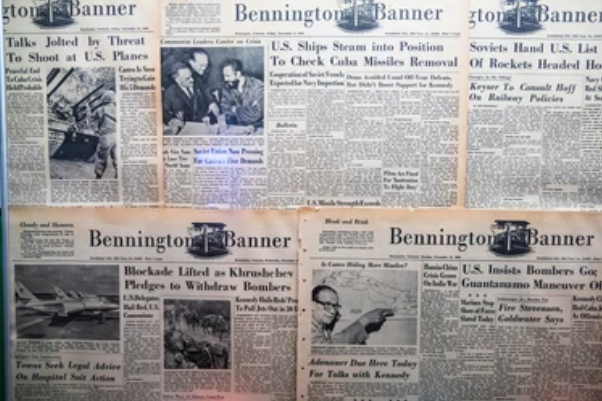
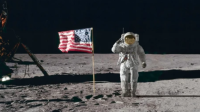

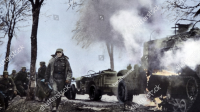
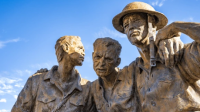

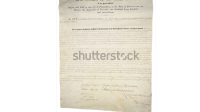
Wow, fantastic blog layout! How long have you been blogging for? you made blogging look easy. The overall look of your site is great, let alone the content!
I really appreciate your help http://www.hairstylesvip.com
Thanks for posting. I really enjoyed reading it, especially because it addressed my problem. http://www.hairstylesvip.com It helped me a lot and I hope it will help others too.
Very good written information. It will be beneficial to everyone who usess it, as well as myself. Keep up the good work – i will definitely read more posts.
Real fantastic visual appeal on this website , I’d rate it 10 10.